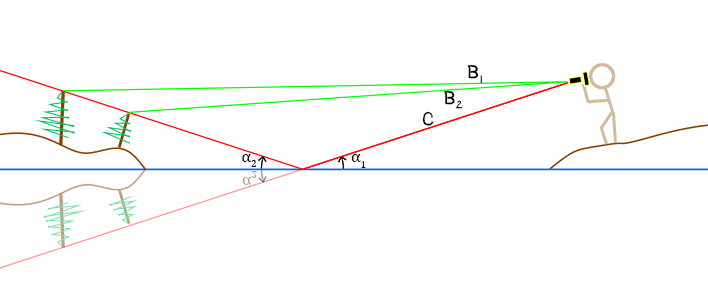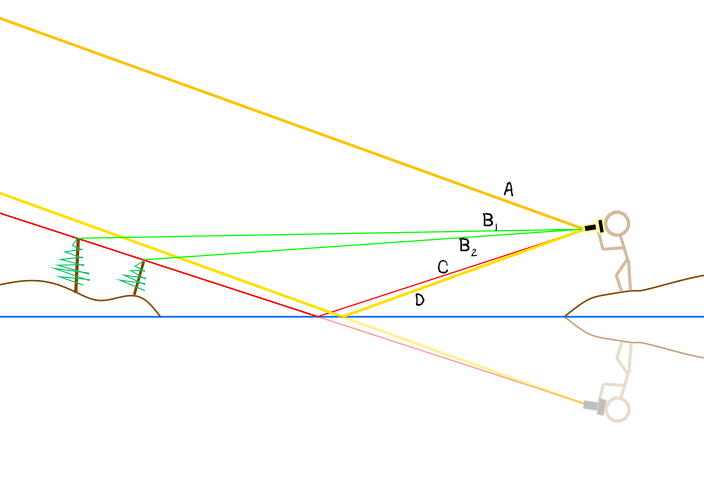I recently posed the question “What’s Wrong With This Picture”blog about a modified landscape photograph of a foggy sunrise in Ten Thousand Islands National Wildlife Refuge in Goodland, Florida. It turns out Deborah Gray Mitchell, one of the commenters, was right; the image was upside down.
To be more precise, I flipped the image vertically and took steps to remove ripples in the reflection and such so that the answer wouldn’t be so obvious. You can see the original picture at “Foggy Sunrise” on our website. Now I’d like to discuss reflections and the clues that should have given the answer away.
Reflections

. . . Of Your Subject
First, the reflected image should NOT look like a mirror copy of the unreflected image. The photographer has a different perspective or viewing angle of the reflection. As your high school physics teacher told you, in reflections, the angle of incidence (e.g., α2 in Figure 1) equals the angle of reflection (α1). Because of that, the view you have of the reflected image would be the same as if the subject had been flipped below the reflecting surface, as shown in Figure 1. I know that may sound like I just contradicted myself, but it is the subject itself I just flipped, not the direct image of the subject (which I would get by flipping both the subject AND the viewer). Notice in Figure 1 that in the reflection, the two trees appear the same height, as depicted with red sightline C. In the direct image, the far tree looks higher, as shown by green sightlines B1 and B2. The further away the subject is, the less of a difference this makes.

. . . Of Celestial Bodies
Here’s another way to look at the effects of reflection; it is as if you had been flipped below the reflecting surface, as shown in Figure 2, instead of flipping the subject. Although possibly less intuitive, this interpretation yields the same results, as shown by lines B1, B2, & C. But it makes the effects of the reflection of the sun more apparent. In the image under consideration, as in most cases, the sun would have been your biggest clue. The sun is 93 million miles from us, but even our closest celestial body, the moon, at under a quarter of a million miles (say 238,900 miles), is much further than what your lens considers to be infinity. All light rays from the sun are virtually parallel (or come in at the same angle), no matter where you are.
This means that the sun will always be higher in the direct view than it appears in the reflection (compare the angle between sun ray A and line B1 to the difference between comparable sightlines D and C).
So There You Have It
I hope that clears things up. This information should make you better at spotting fake reflections. Or as a photographer, it may help you create better forgeries by knowing what mistakes to avoid. Good luck!
Of course, you may share your reflections on this or any related material (or questions) in the comment section below. Thanks for stopping by.
Leave a Reply